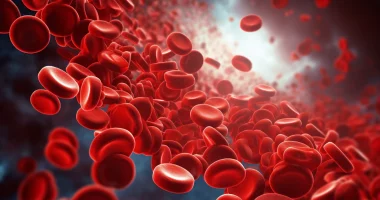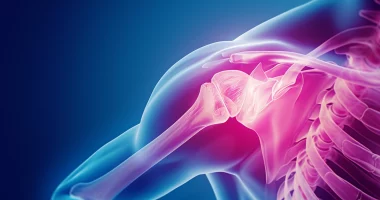Glossopharyngeal neuralgia
Definition
Glossopharyngeal neuralgia is a unilateral lesion of the IX cranial nerve, manifested by paroxysms of pain in the root of the tongue, tonsils, pharynx, soft palate, and ear. It is accompanied by impaired taste perception of the posterior 1/3 of the tongue on the side of the lesion, impaired salivation, and decreased pharyngeal and palatal reflexes. Diagnosis of pathology includes an examination by a neurologist, otolaryngologist, and dentist and an MRI or CT scan of the brain. Treatment is mainly conservative, consisting of analgesics, anticonvulsants, sedatives and sleeping medications, vitamins and tonic agents, and physiotherapeutic methods.
General information
Laryngeal neuralgia is a relatively rare condition. There are about 16 cases per 10 million people. People usually suffer after 40 years of age, men more often than women. Specialists in neurology distinguish two forms of the disease: idiopathic (primary) and symptomatic (secondary). The former develops in cases of trauma, infectious processes of the posterior cranial fossa, or nerve compression by a tumor.
Anatomy and function of the lingual nerve
The laryngeal nerve (n. glossopharyngeus) originates in several nuclei of the medulla oblongata. It consists of sensitive, motor, and autonomic parasympathetic fibers. Sensitive fibers begin in the nucleus of the same name, common to the uvula and vagus nerve (n.vagus), innervate the mucous membrane of tonsils, soft palate, pharynx, tongue, eustachian tube, tympanic cavity. Fibers of gustatory sensitivity come from the nucleus of the solitary pathway common to the intermediate nerve, which provides taste sensation of the anterior 2/3 of the tongue. The taste fibers of the glossopharyngeal nerve are responsible for the perception of taste of the posterior 1/3 of the tongue surface and the epiglottis.
The motor fibers of the laryngeal nerve originate from the bilateral nucleus common to the n.vagus and innervate the glossopharyngeal muscle, which raises the pharynx. Along with the vagus nerve, motor and sensory fibers of the n. glossopharyngeus form the reflex arcs of the palatine and pharyngeal reflexes.
Parasympathetic fibers, which are part of the laryngeal nerve, start from the lower salivary nucleus, as part of the tympanic nerve, and then the small stony nerve reaches the auricular autonomic ganglion, from where they reach the parotid gland with a branch of the trigeminal nerve, salivation of which they regulate.
The commonality of the nuclei and conducting pathways of the lingual and vagus nerves leads to an extremely rare occurrence of isolated pathology of n. glossopharyngeus. More often, the symptoms of their combined lesions are observed in neuritis of the lingual pharyngeal nerve.
Causes
In some cases, neuralgia of the laryngeal nerve is idiopathic, and its exact etiology cannot be established. Atherosclerosis, infections of the ENT organs (otitis media, tonsillitis, chronic pharyngitis, sinusitis), acute and chronic intoxication, and viral infections (e.g., influenza) are considered significant factors in the development of the disease.
Secondary neuralgia of the lingual nerve can occur with infectious pathology of the posterior cranial fossa (encephalitis,arachnoiditis), craniocerebral trauma, metabolic disorders (diabetes mellitus, hyperthyroidism), and compression (irritation) of the nerve at any part of its passage. -The latter is possible with intracerebral tumors of the cerebellar angle (glioma, meningioma, medulloblastoma, hemangioblastoma), intracerebral hematomas, nasopharyngeal tumors, hypertrophy of the styloid process, aneurysm of the carotid artery, ossification of the styloglossal ligament, overgrowth of osteophytes of the jugular foramen. A number of clinicians suggest that, in some cases, laryngeal neuralgia may be the first symptom of laryngeal or pharyngeal cancer.
Symptoms
Neuralgia of the lingual pharyngeal nerve is clinically manifested by unilateral pain paroxysms, which vary from a few seconds to 1-3 min. Intense pain begins at the root of the tongue and quickly spreads to the soft palate, tonsils, pharynx, and ear. Irradiation to the lower jaw, eye, and neck is possible. Pain can be provoked by chewing, coughing, swallowing, yawning, overeating hot or cold food, and everyday conversation. Patients usually feel a dry throat during an attack and increased salivation afterward. However, dry throat is not a permanent sign of the disease because, in many patients, the secretory insufficiency of the parotid gland is successfully compensated by other salivary glands.
Swallowing disorders associated with paresis of the pharyngeal elevating muscle are not clinically pronounced since this muscle plays an insignificant role in swallowing. Along with this, there may be difficulties in swallowing and chewing food, associated with impairment of various types of sensitivity, including proprioceptive—responsible for the feeling of the position of the tongue in the oral cavity.
The neuralgia of the lingual, pharyngeal nerve often has a wave-like course with exacerbations in the fall and winter seasons.
Diagnosis
Neuralgia of the lingual pharyngeal nerve is diagnosed by a neurologist, although to exclude diseases of the oral cavity, ear, and throat requires consultation with a dentist and otolaryngologist, respectively. The neurological examination determines the absence of pain sensitivity (analgesia) in the area of the base of the tongue, soft palate, tonsils, and upper pharynx. A study of taste sensitivity is carried out, during which a special solution is applied to symmetrical tongue areas with a pipette. It is important to detect an isolated unilateral disorder of taste sensitivity of the posterior 1/3 of the tongue because bilateral taste disorder can be observed in the pathology of the oral mucosa (e.g., chronic stomatitis).
The pharyngeal reflex (occurrence of swallowing, sometimes coughing or gagging movements in response to touching the posterior wall of the pharynx with a paper tube) and the palatal reflex (touching the soft palate is accompanied by elevation of the palate and its uvula) are checked. Unilateral absence of these reflexes speaks in favor of lesion of n. glossopharyngeus, but it can also be observed in pathology of the vagus nerve. Detection during examination of the pharynx and pharynx of rashes typical for herpetic infection suggests ganglionitis of the lingual nerve nodes, which has almost identical symptomatology to neuritis of the lingual nerve.
To determine the cause of secondary neuritis, neuroimaging diagnostics—CT or MRI of the brain—are used. In the absence of such a possibility, echo-EEG, EEG, and ophthalmologist consultation for eye fundus examination (ophthalmoscopy) are prescribed.
Treatment and prognosis
Neuralgia is mostly treated conservatively. The exception is cases of nerve compression that require surgical intervention (e.g., resection of a hypertrophied styloid process).
To control the pain paroxysm, apply lubrication of the pharynx and root of the tongue with 10% cocaine solution, which eliminates pain for 6-7 hours. In persistent pain syndrome, blockade of the lingual nerve is 1-2% solution of novocaine. Along with this, for ingestion, prescribe non-narcotic analgesics and anticonvulsants. In severe pain syndrome, it is additionally advisable to use sleeping pills, sedatives, antidepressants, and neuroleptic drugs.
If the causative disease is successfully eliminated, especially with microvascular decompression surgery of the glossopharyngeal nerve, the prognosis for recovery is favorable. However, long-term therapy for several years is necessary to eliminate neuralgia.
All these treatment options are available in more than 600 hospitals worldwide (https://doctor.global/results/diseases/glossopharyngeal-neuralgia). For example, Microvascular decompression (MVD)can be performed in these countries at following approximate prices:
Turkey$11.4 K in 28 clinics
China$24.4 K in 7 clinics
Germany$26.2 K in 39 clinics
Israel$29.4 K in 12 clinics
United States$40.1 K in 14 clinics.

